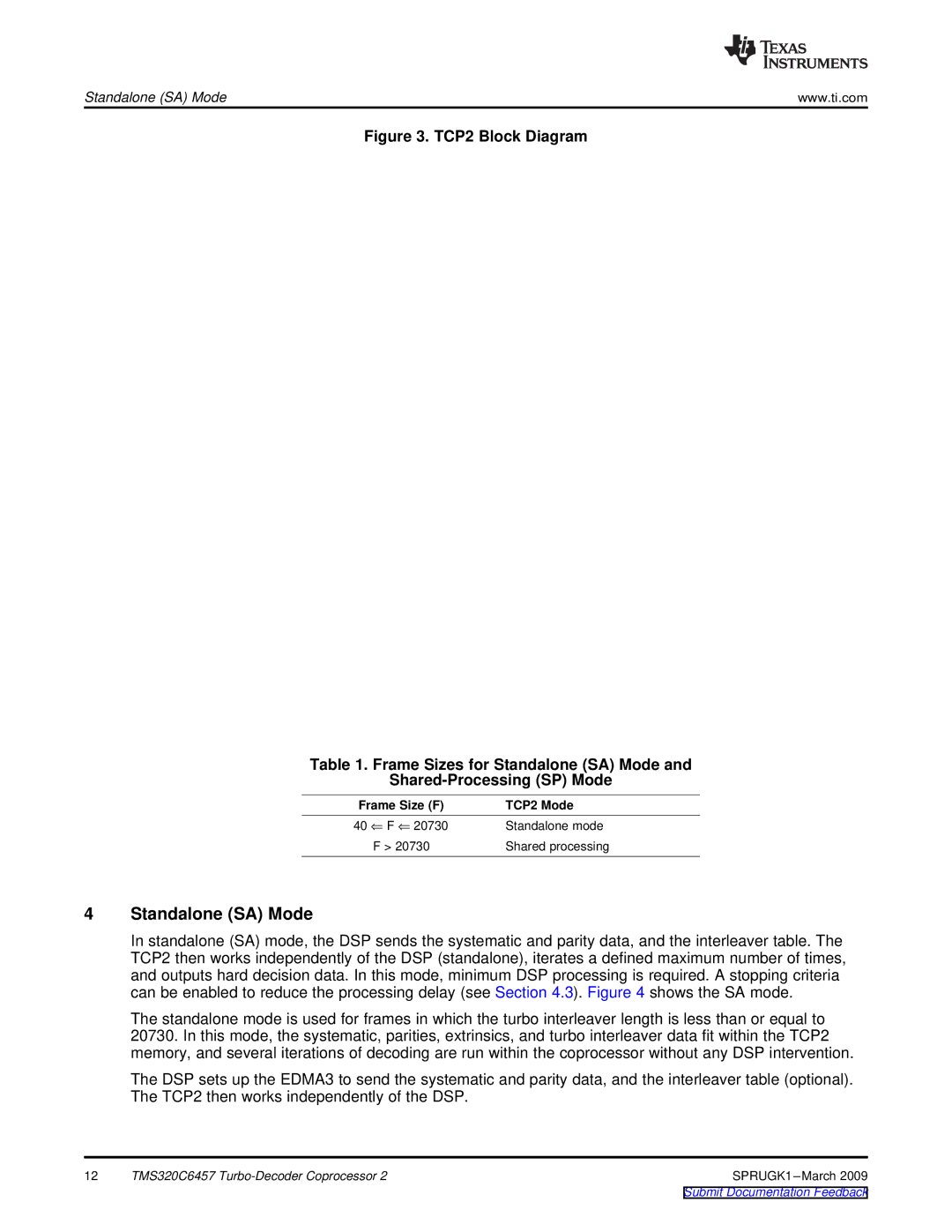
Standalone (SA) Mode
|
|
www.ti.com
Figure 3. TCP2 Block Diagram
TCP2_INT TCPXEVT TCPREVT
|
|
|
|
|
|
|
|
|
|
|
|
|
|
|
|
|
|
|
|
|
|
|
|
|
| CPU |
|
| REVT/XEVT |
|
| ||||
|
| interrupt |
|
|
|
| |||||
|
|
|
| generation |
|
| |||||
|
| generation |
|
|
|
| |||||
|
|
|
|
|
|
|
|
|
| ||
|
|
|
|
|
|
|
|
|
|
|
|
|
|
|
|
|
|
|
|
|
|
|
|
|
|
|
|
|
|
|
|
|
|
|
|
TCP2 control
|
|
|
|
|
|
|
|
|
|
|
|
|
|
|
|
EDMA3 I/F unit |
| Memory block |
| Processing unit | |||
|
|
|
|
|
|
|
|
Table 1. Frame Sizes for Standalone (SA) Mode and
Frame Size (F) | TCP2 Mode |
40 ⇐ F ⇐ 20730 | Standalone mode |
F > 20730 | Shared processing |
4Standalone (SA) Mode
In standalone (SA) mode, the DSP sends the systematic and parity data, and the interleaver table. The TCP2 then works independently of the DSP (standalone), iterates a defined maximum number of times, and outputs hard decision data. In this mode, minimum DSP processing is required. A stopping criteria can be enabled to reduce the processing delay (see Section 4.3). Figure 4 shows the SA mode.
The standalone mode is used for frames in which the turbo interleaver length is less than or equal to 20730. In this mode, the systematic, parities, extrinsics, and turbo interleaver data fit within the TCP2 memory, and several iterations of decoding are run within the coprocessor without any DSP intervention.
The DSP sets up the EDMA3 to send the systematic and parity data, and the interleaver table (optional). The TCP2 then works independently of the DSP.
12 | TMS320C6457 |
